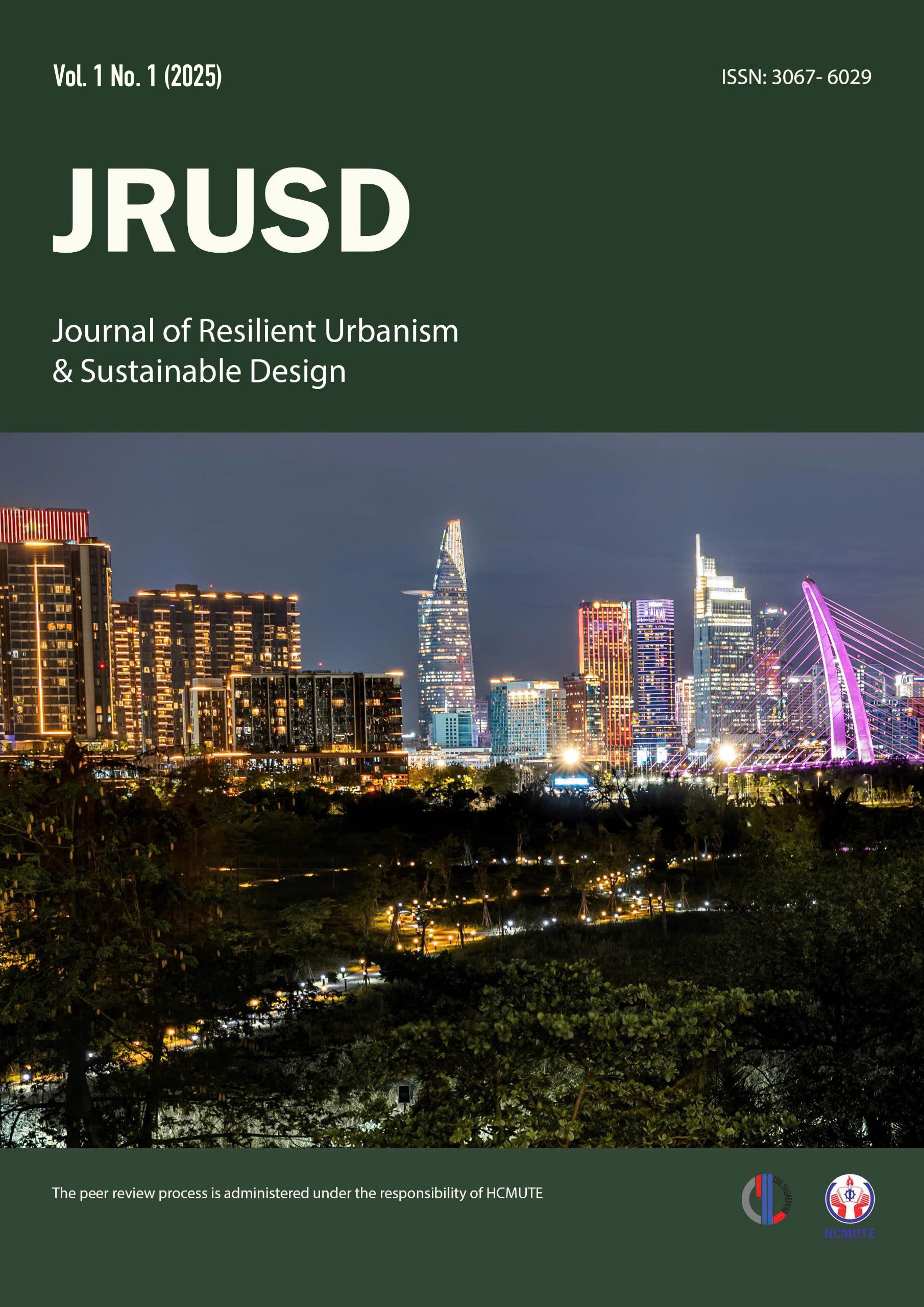Canal-Side Communities in Southeast Asia: Sustainable Urban Development and Environmental Remediation in Ho Chi Minh City
DOI:
https://doi.org/10.64822/jrusd.v1i1.3Keywords:
Xuyen Tam Canal, canal-side housing, environmental pollution, resettlement, urban planning, Ho Chi Minh City, living conditions, Southeast AsiaAbstract
This study presents the living conditions of the residential community along the Xuyen Tam canal, an important waterway facing severe pollution and urbanization issues in Ho Chi Minh City (HCMC). The research focuses on key aspects such as housing types, average living area, domestic water sources, environmental sanitation, income, occupation, and residents' resettlement aspirations. Survey results indicate that most houses are semi-permanent or temporary (60%), living spaces are cramped (with 50% of households occupying 10-20 m² and 10% under 10 m²), clean water access is limited (only 60% use tap water, often unreliable), environmental sanitation is poor (50% lack adequate toilets), and incomes are unstable (70% earn less than 6 million VND/month). Water and air pollution negatively impact the physical and mental health of residents, contributing to respiratory and gastrointestinal diseases. The study also compares the situation at Xuyen Tam canal with canal-side areas in other major Southeast Asian cities like Bangkok, Jakarta, and Manila, highlighting common challenges such as inadequate infrastructure and environmental degradation. Based on the analysis, the paper proposes integrated solutions regarding urban planning (including infrastructure rehabilitation), environmental remediation (wastewater treatment, solid waste management), and improving residents' livelihoods (resettlement support, job creation), emphasizing the need for policies supporting sustainable urban development.
Downloads
Published
How to Cite
Issue
Section
License
Copyright (c) 2025 Journal of Resilient Urbanism & Sustainable Design

This work is licensed under a Creative Commons Attribution-NonCommercial 4.0 International License.



